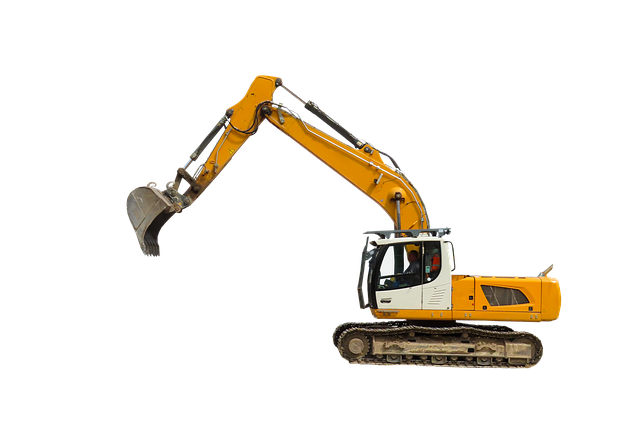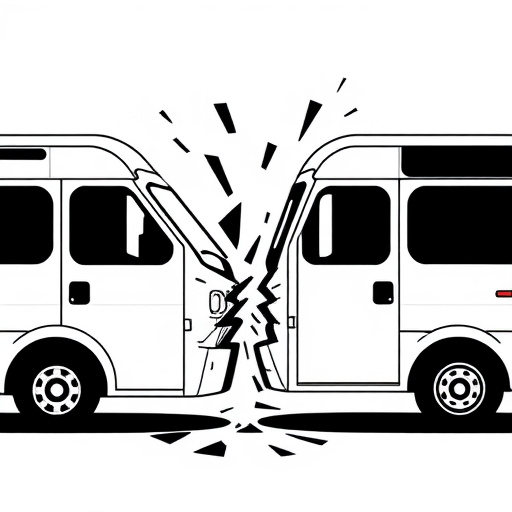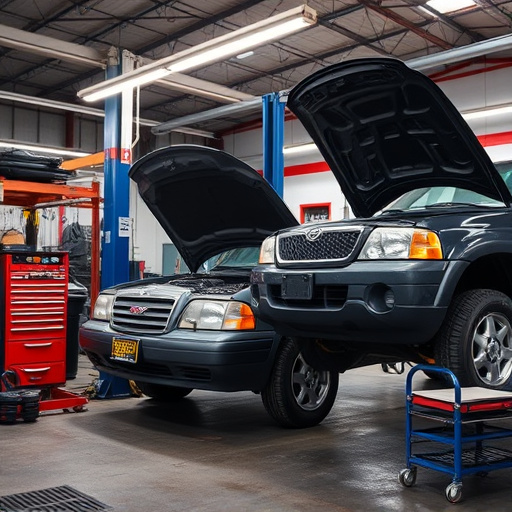Category: Tesla electrical repair
Tesla Electrical Repair: Revolutionizing Energy Infrastructure
Introduction
Welcome to an in-depth exploration of a transformative technology that is reshaping our energy landscape—Tesla electrical repair. This comprehensive guide aims to unravel the complexities of this field, highlighting its historical evolution, global impact, and the innovative spirit driving its development. By delving into various facets, from technological breakthroughs to policy frameworks, we will uncover why Tesla electrical repair is not just a niche topic but a pivotal force in the pursuit of sustainable energy solutions.
Understanding Tesla Electrical Repair: Unlocking the Basics
Definition: Tesla electrical repair refers to the specialized practice of repairing and maintaining advanced electric systems, with a particular focus on high-voltage direct current (HVDC) infrastructure. It involves the intricate work of ensuring the efficient and safe operation of electric power transmission and distribution networks, critical for modern society’s energy demands.
Core Components:
- High-Voltage Direct Current (HVDC) Technology: At the heart of Tesla electrical repair lies HVDC, a system that transmits electricity over long distances with minimal loss. This technology is crucial for connecting remote renewable energy sources to the grid.
- Power Converters and Inverters: These devices play a vital role in converting between alternating current (AC) and direct current (DC), enabling efficient power transmission and utilization.
- Substations: Serving as hubs for electricity distribution, substations are critical locations where Tesla electrical repair experts ensure the reliable transfer of power.
- Smart Grid Integration: The integration of smart grid technologies allows for real-time monitoring and control of electric systems, enhancing efficiency and resilience.
Historical Context:
The concept of Tesla electrical repair traces back to Thomas Edison’s groundbreaking work on direct current (DC) electricity in the late 19th century. However, it gained prominence with the advent of alternating current (AC) systems, developed by Nikola Tesla and George Westinghouse, which revolutionized long-distance power transmission. The modern era of Tesla electrical repair emerged as the need for efficient and sustainable energy transfer became more urgent, fueled by renewable energy sources and smart grid technologies.
Global Impact and Trends: A World in Transition
International Influence:
Tesla electrical repair has left an indelible mark on global energy infrastructure. Countries worldwide have embraced HVDC technology to address the challenges of integrating renewable energy sources into existing grids. For instance, China’s ambitious renewable energy projects heavily rely on advanced Tesla electrical repair solutions to transmit power from wind and solar farms to population centers.
Key Global Trends:
- Renewable Energy Integration: The growing adoption of wind, solar, and other renewable sources necessitates efficient HVDC transmission systems to ensure a stable grid.
- Cross-Border Power Transmission: International cooperation in energy projects, such as the Europa Grid initiative, highlights the need for standardized Tesla electrical repair technologies across borders.
- Smart Cities and Microgrids: Urban areas are embracing smart grid solutions, enabling decentralized power management and enhancing resilience against outages.
- Decarbonization Efforts: Many countries are setting aggressive targets to reduce carbon emissions, driving investment in clean energy infrastructure, including Tesla electrical repairs.
Regional Variations:
- Europe: Leading in renewable energy policy, Europe has seen significant investment in offshore wind projects, requiring advanced Tesla electrical repair infrastructure for efficient power transfer.
- North America: The United States and Canada are focusing on enhancing cross-border power trade and integrating more renewable sources into their grids.
- Asia-Pacific: Countries like Japan and South Korea are investing heavily in smart grid technologies, while China continues to dominate global HVDC transmission system deployment.
- Latin America and Africa: These regions are exploring Tesla electrical repair as a means to improve grid stability and access to reliable electricity.
Economic Considerations: Powering Growth and Investment
Market Dynamics:
The Tesla electrical repair market is experiencing significant growth, driven by the global push for energy transition and decarbonization. According to a 2022 report by Grand View Research, the global HVDC transmission market size was valued at USD 14.9 billion in 2021 and is expected to grow at a compound annual growth rate (CAGR) of 7.8% from 2022 to 2030.
Investment Patterns:
- Government Initiatives: Many governments are investing public funds in renewable energy projects, including Tesla electrical repair infrastructure, as part of their green energy agendas.
- Private Sector Investment: Major electricity utilities and private investors are allocating substantial capital to upgrade and expand power transmission networks, recognizing the long-term benefits of efficient HVDC systems.
- Public-Private Partnerships (PPPs): Collaborative projects between governments and private companies are accelerating Tesla electrical repair projects, leveraging expertise and resources.
Economic Impact:
- Job Creation: The sector contributes to employment generation, with skilled technicians and engineers playing a crucial role in the design, installation, and maintenance of advanced power systems.
- Infrastructure Development: Tesla electrical repair projects often accompany broader infrastructure development, fostering economic growth and regional connectivity.
- Energy Security: Reliable HVDC transmission ensures energy security by diversifying power sources and reducing reliance on volatile fossil fuel markets.
Technological Advancements: Driving Innovation Forward
Recent Breakthroughs:
- High-Voltage Direct Current (HVDC) Cable Systems: Advanced cable technologies have improved the efficiency and capacity of HVDC transmissions, enabling the transport of larger amounts of renewable energy.
- Power Electronics: Significant progress in power electronics has led to more compact and efficient converters, reducing system size and cost.
- Digital Control Systems: The integration of artificial intelligence (AI) and machine learning algorithms enhances the performance and reliability of power systems, allowing for predictive maintenance and improved grid stability.
- Fiber-Optic Communication: This technology enables faster and more secure data transmission over long distances, crucial for remote monitoring and control of HVDC systems.
Future Potential:
- Superconducting Transmission Lines: Research into superconducting materials promises even higher-voltage, more efficient power transfer, reducing energy loss during transmission.
- Wireless Power Transfer: While still in the experimental phase, wireless power transfer technologies could revolutionize local energy distribution, eliminating the need for physical cables.
- Quantum Computing Applications: Quantum computers may play a role in optimizing power grid operations, enhancing decision-making capabilities and enabling more efficient energy allocation.
- Decentralized Energy Resources: The rise of decentralized energy systems, powered by renewable sources, will require advanced Tesla electrical repair technologies to integrate these resources into the grid.
Policy and Regulation: Navigating the Legal Landscape
Key Policies and Regulations:
- Energy Transition Laws: Many countries have enacted legislation promoting renewable energy adoption, often including incentives for efficient power transmission infrastructure, such as Tesla electrical repairs.
- Grid Code Standards: Regulatory bodies establish technical standards for grid stability and interoperability, ensuring compatibility between different power systems.
- Environmental Regulations: Environmental protection policies influence the design and operation of power systems, with considerations for carbon emissions and ecological impact.
- International Treaties: Cross-border energy projects are often governed by international agreements, such as those related to energy trade and environmental standards.
Influence on Development:
- Incentives and Subsidies: Governments use financial incentives to encourage investment in Tesla electrical repair projects, accelerating the transition to cleaner energy sources.
- Regulatory Frameworks: Clear policy guidelines facilitate project approval processes, reducing uncertainty for investors while ensuring compliance with environmental and safety standards.
- Standardization: International standards for HVDC systems enhance interoperability between countries, streamlining cross-border power trade.
- Permitting and Licensing: Efficient permitting processes are essential to avoid delays in critical energy infrastructure projects, ensuring a reliable energy supply.
Challenges and Criticisms: Overcoming Barriers
Main Challenges:
- High Initial Costs: Tesla electrical repair technologies, particularly advanced HVDC systems, carry significant upfront investment costs, posing financial hurdles for project developers.
- Technical Complexity: The intricate nature of these systems requires highly skilled labor, leading to challenges in finding and retaining qualified technicians.
- Land Acquisition: Siting new transmission lines and substations can be contentious due to land ownership issues and community concerns over aesthetics and environmental impact.
- Regulatory Burdens: Navigating complex regulatory environments can prolong project timelines and increase costs.
Criticisms and Solutions:
- Environmental Concerns: While promoting clean energy, critics argue that large-scale HVDC transmission lines may have visual and ecological impacts. Addressing these concerns through careful planning and innovative routing strategies is essential.
- Public Acceptance: Local communities’ opposition to new infrastructure projects can delay developments. Transparent communication and community engagement are vital to gaining public support.
- Technological Maturity: Critics question the readiness of certain advanced technologies, such as superconducting cables. Continuous research and development efforts are necessary to address these concerns.
- Cybersecurity Risks: As power systems become more interconnected, cybersecurity threats increase. Robust security measures and international cooperation on cyber standards are required.
Case Studies: Success Stories in Action
Case Study 1: China’s HVDC Supergrid
China has embarked on an ambitious project to create a nationwide HVDC supergrid, utilizing advanced Tesla electrical repair technologies. This project aims to connect remote renewable energy sources with population centers, ensuring a stable and reliable power supply. The country’s success in deploying HVDC transmission has significantly contributed to its leadership in renewable energy integration.
Key Takeaways:
- Efficient HVDC systems enabled China to tap into vast renewable resources, reducing reliance on fossil fuels.
- Standardized technologies across regions facilitated cross-border power trade, enhancing regional cooperation.
- The project’s scalability and reliability have set a global benchmark for clean energy infrastructure.
Case Study 2: Smart Grid Transformation in Denmark
Denmark has been at the forefront of smart grid technology implementation, integrating Tesla electrical repair solutions to support its ambitious renewable energy targets. The country’s smart grid allows for real-time monitoring and control of power distribution, enabling efficient management of variable renewable energy sources.
Lessons Learned:
- Smart grid technologies improved grid stability and reduced power outages, enhancing customer satisfaction.
- Decentralized energy management enabled Denmark to achieve high renewable energy penetration without significant disruptions.
- Public-private partnerships facilitated the rapid deployment of advanced power systems, accelerating the country’s energy transition.
Case Study 3: Offshore Wind Integration in Germany
Germany has successfully integrated large-scale offshore wind farms into its grid using Tesla electrical repair infrastructure. This case study highlights the challenges and solutions in connecting remote renewable resources to the mainland.
Key Insights:
- HVDC cables efficiently transmit power from offshore wind farms to onshore conversion stations, minimizing energy loss.
- Advanced control systems ensure grid stability during periods of high renewable energy generation.
- Long-term planning and investment in Tesla electrical repair infrastructure have facilitated Germany’s transition to cleaner energy sources.
Future Prospects: Looking Ahead to 2030 and Beyond
Emerging Trends:
- Decentralized Energy Microgrids: The trend towards distributed energy resources will see the rise of local microgrids, powered by renewable sources and Tesla electrical repair technologies, ensuring energy resilience at the community level.
- Energy Storage Solutions: As intermittent renewable sources become more prevalent, advanced energy storage systems, integrated with efficient power transmission, will be crucial for grid stability.
- Digital Twin Technologies: Virtual simulations of power systems using AI and IoT will enable predictive maintenance and optimize performance.
Strategic Considerations:
- International Collaboration: Continued cross-border cooperation will be vital to addressing global energy challenges, sharing best practices, and developing standardized technologies.
- Policy Innovation: Governments should adapt policies to encourage investment in advanced power systems while ensuring environmental sustainability.
- Skills Development: Investing in education and training programs is essential to build a skilled workforce capable of maintaining and operating modern Tesla electrical repair infrastructure.
- Sustainable Finance: Exploring innovative funding mechanisms, such as green bonds and public-private partnerships, can accelerate the deployment of clean energy projects.
Conclusion: A Pathway to Sustainable Energy
Tesla electrical repair is not merely a technical discipline; it is a catalyst for global energy transformation. As we navigate an era defined by climate change and resource scarcity, efficient power transmission and distribution become critical to ensuring a sustainable future. Through technological advancements, international collaboration, and innovative policies, Tesla electrical repair is paving the way for a cleaner, more resilient energy landscape.
By embracing these solutions, nations can reduce their carbon footprint, enhance energy security, and ensure reliable access to electricity for all. The journey towards a sustainable energy future depends on continued investment, research, and adaptation in the field of Tesla electrical repair.
FAQ Section: Answering Common Queries
Q: What are the primary benefits of using HVDC technology for power transmission?
A: High-Voltage Direct Current (HVDC) technology offers several advantages, including minimal energy loss over long distances, higher voltage levels, and improved efficiency. It also facilitates the integration of renewable energy sources from remote locations into existing grids.
Q: How does Tesla electrical repair contribute to grid stability?
A: Tesla electrical repair systems enable real-time monitoring and control of power flows, ensuring a stable grid. They allow for precise balancing of supply and demand, especially with the increasing presence of variable renewable energy sources. Advanced control algorithms play a pivotal role in maintaining grid stability.
Q: What are some common challenges faced by Tesla electrical repair technicians?
A: Technicians often encounter complex system designs, remote project sites, high safety standards, and the need for specialized training. Additionally, ensuring compatibility with existing infrastructure and managing land acquisition can present significant challenges.
Q: How does international collaboration benefit the field of Tesla electrical repair?
A: International cooperation enables knowledge sharing, standardization, and cost reduction through collective investment in research and development. It also facilitates cross-border power trade, enhancing energy security and market integration.
Q: What role do renewable energy sources play in the future of Tesla electrical repair?
A: Renewable energy sources, such as wind and solar, will continue to drive the demand for efficient HVDC transmission systems. As these sources become more prevalent, Tesla electrical repair technologies will be essential for integrating them into existing grids, ensuring a sustainable and reliable energy supply.
Master Tesla Electrical Repairs: Signal, Wipers, Mirrors

Tesla electrical repair involves addressing complex systems controlling signals, wipers, and mirrors…….
Mastering Tesla Electrical Repair: Lighting & Signal Systems
Master Tesla Charging Port Repair: Quick Fixes for Owners
Tesla Electrical Repair: Diagnose and Fix 12V Auxiliary Battery Issues
Mastering Tesla Electrical Repair: Diagnose and Replace Circuit Boards

Tesla electrical systems, relying on intricate circuit boards, can develop issues from faulty connec…….
Mastering Tesla Electrical Repair and Software Reprogramming

Tesla electrical repair demands specialized knowledge of its complex systems, with the Vehicle Contr…….
Tesla Electrical Repair: DIY Risks, Uncertified Hazards

Tesla electrical repairs require certified professionals due to complex integration of technology an…….
Mastering Tesla Electrical Repair: Charger Failures Solved
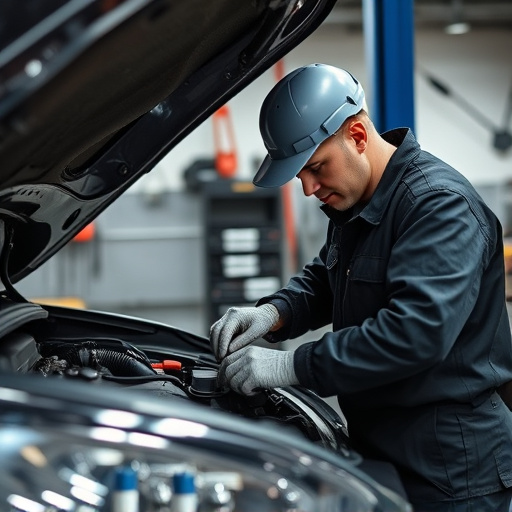
Tesla onboard charger failures are common due to power surges, wear, and environmental stress. Diagn…….
Mastering Tesla Electrical Repair: Diagnose, Replace, Calibrate
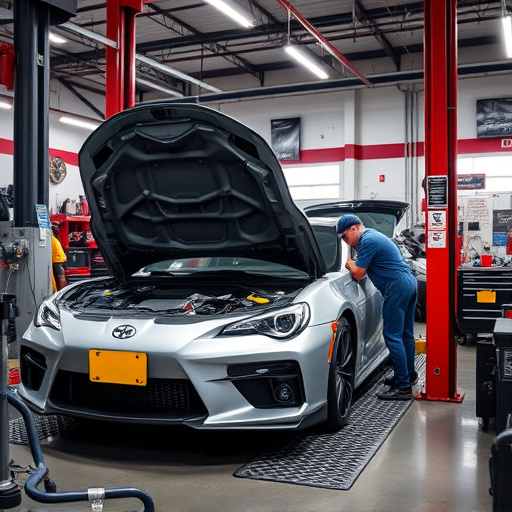
Tesla owners facing electrical issues should follow a structured diagnosis process using diagnostic…….
